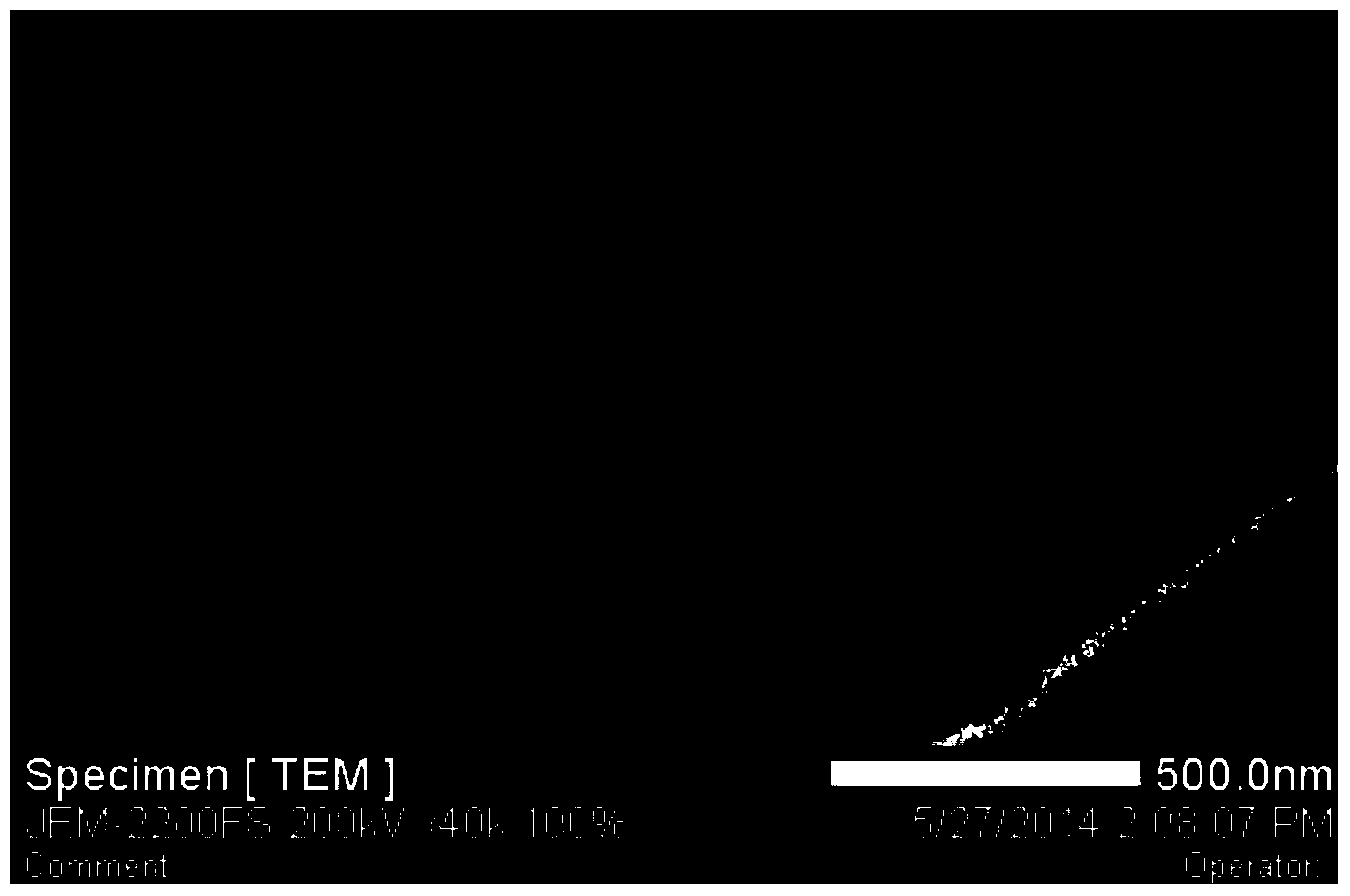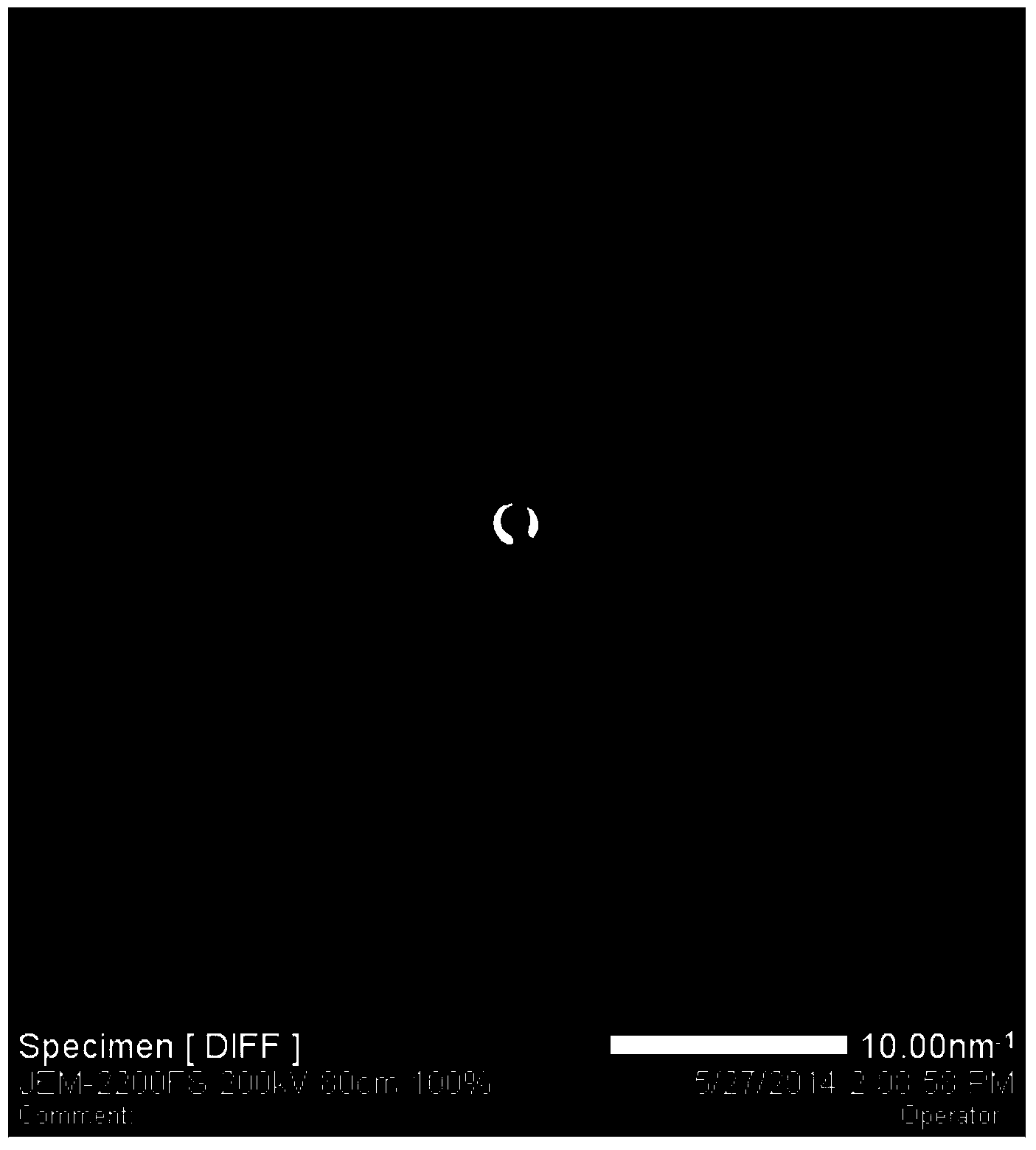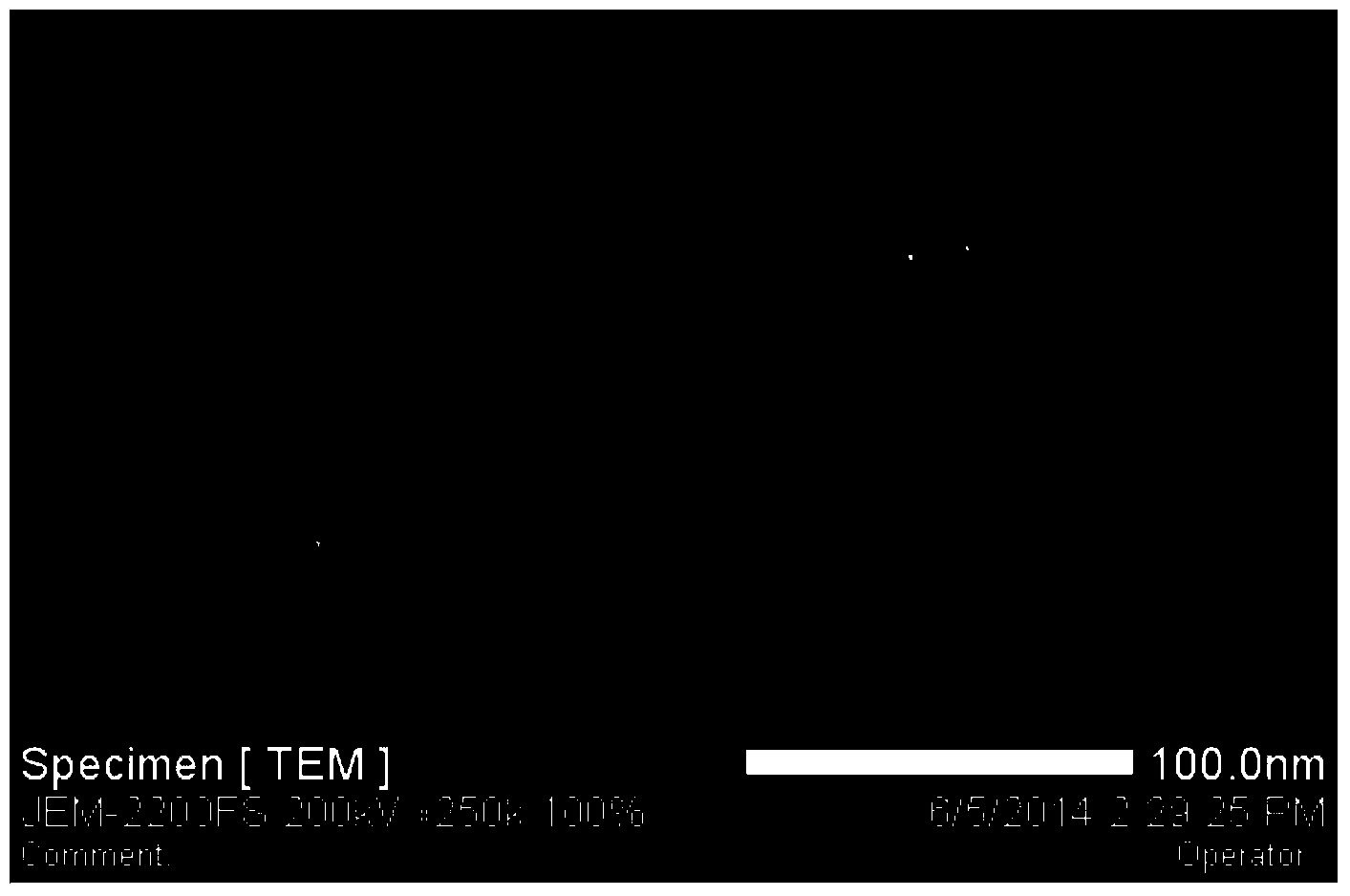Graphene-supported layered MoS2 (molybdenum disulfide) nanocomposite and preparation method thereof
A nanocomposite, molybdenum disulfide technology, applied in chemical instruments and methods, chemical/physical processes, physical/chemical process catalysts, etc., can solve the problems of poor photocatalytic performance and small composite area, and achieve improved catalytic performance, High catalytic performance and uniform distribution effect
- Summary
- Abstract
- Description
- Claims
- Application Information
AI Technical Summary
Problems solved by technology
Method used
Image
Examples
Embodiment 1
[0048]Disperse 10 mg of graphene oxide in 10 mL of dimethylformamide (DMF), place in a beaker and vibrate ultrasonically for 4 hours to obtain a stable and uniform suspension. Then 11.02 mg of ammonium molybdate and 9.51 mg of thiourea (the molar ratio of molybdenum to sulfur is equal to 1:2) were added into 20 mL of deionized water, and stirred thoroughly to obtain a clear solution. Mix the suspension of graphene oxide and DMF with the solution of ammonium molybdate and thiourea evenly, and add it into a polytetrafluoroethylene-lined hydrothermal reactor (volume 50mL), and the filling degree of the reactor is 50% to 60%. , the reaction kettle was placed in a constant temperature box, and the temperature was maintained at 220° C. for hydrothermal reaction for 18 hours. The black product obtained by the hydrothermal reaction was removed from the mixed solution of deionized water and ethanol (volume ratio 1:1) to wash away DMF and reaction residues, and then the obtained product...
Embodiment 2
[0052] Disperse 10 mg of graphene oxide in 12 mL of DMF, place in a beaker and vibrate ultrasonically for 4 h to obtain a stable and uniform suspension. Then add 15.25 mg of ammonium molybdate and 11.06 mg of thiourea (the molar ratio of molybdenum to sulfur is greater than 1:2) into 13 mL of deionized water, and stir thoroughly to obtain a clear solution. The suspension of graphene oxide and DMF and the solution of ammonium molybdate thiourea are mixed uniformly, and added to a hydrothermal reaction kettle (volume 50mL) of a polytetrafluoroethylene liner, and the filling degree of the reaction kettle is 50% to 60%. The reaction kettle was placed in a constant temperature box, and the temperature was maintained at 200° C. for hydrothermal reaction for 18 hours. The black product obtained by the hydrothermal reaction was removed from the mixed solution of deionized water and ethanol (volume ratio 1:1) to wash away DMF and reaction residues, and then the obtained product was dri...
Embodiment 3
[0056] Disperse 10 mg of graphene oxide in 10 mL of DMF, place in a beaker and vibrate ultrasonically for 4 h to obtain a stable and uniform suspension. Then add 12.25 mg of ammonium molybdate and 14.25 mg of thiourea (the molar ratio of molybdenum to sulfur is less than 1:2) into 20 mL of deionized water, and stir thoroughly to obtain a clear solution. The suspension of graphene oxide and DMF and the solution of ammonium molybdate thiourea are mixed uniformly, and added to a hydrothermal reaction kettle (volume 50mL) of a polytetrafluoroethylene liner, and the filling degree of the reaction kettle is 50% to 60%. The reaction kettle was placed in a constant temperature box, and the temperature was maintained at 200° C. for hydrothermal reaction for 20 h. The black product obtained by the hydrothermal reaction was removed from the mixed solution of deionized water and ethanol (volume ratio 1:1) to wash away DMF and reaction residues, and then the obtained product was dried at 8...
PUM
 Login to View More
Login to View More Abstract
Description
Claims
Application Information
 Login to View More
Login to View More - R&D
- Intellectual Property
- Life Sciences
- Materials
- Tech Scout
- Unparalleled Data Quality
- Higher Quality Content
- 60% Fewer Hallucinations
Browse by: Latest US Patents, China's latest patents, Technical Efficacy Thesaurus, Application Domain, Technology Topic, Popular Technical Reports.
© 2025 PatSnap. All rights reserved.Legal|Privacy policy|Modern Slavery Act Transparency Statement|Sitemap|About US| Contact US: help@patsnap.com



